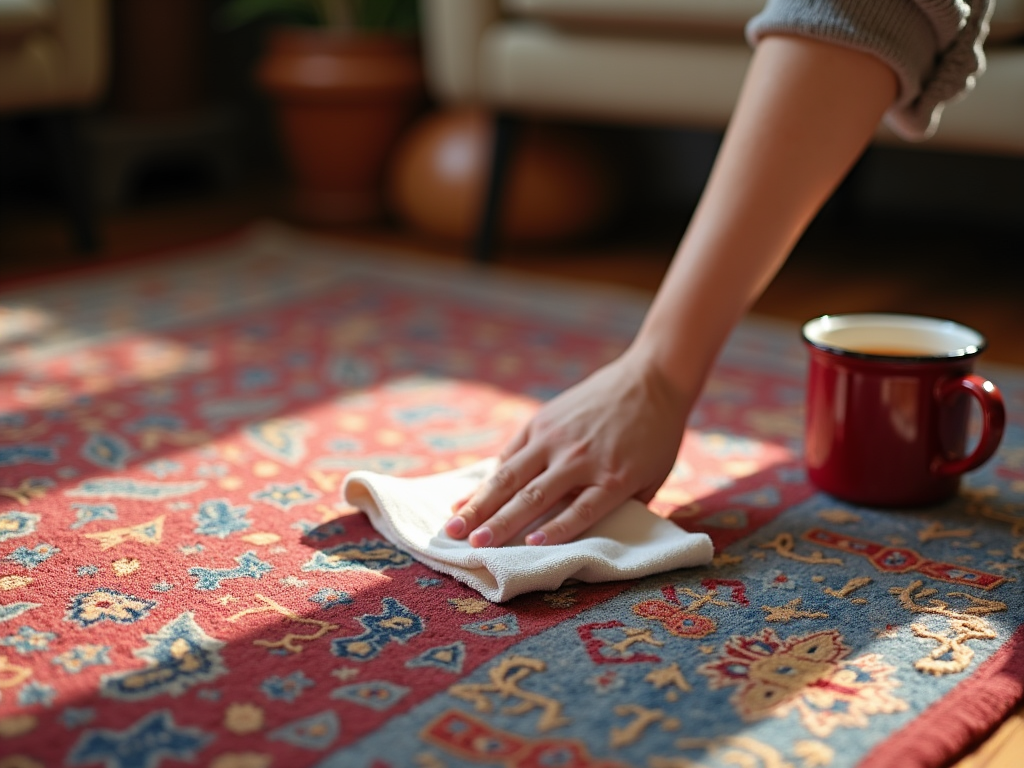Keeping rugs and carpets clean not only enhances the beauty of your home but also helps maintain a healthy environment. Regular cleaning is crucial to remove dirt, allergens, and stains that can accumulate over time. This article will guide you through the essential steps for effective rug and carpet cleaning, from spot treatments to deep cleaning techniques, ensuring your floors remain fresh and inviting.
Gather the Necessary Cleaning Supplies

Before you begin, ensure you have all the necessary tools and supplies for cleaning your rugs and carpets. This preparation will save you time and help you achieve optimal results. A well-equipped cleaning kit typically includes:
- Vacuum cleaner with attachments
- Clean white cloths or paper towels
- Mild detergents or commercial carpet cleaners
- Soft-bristle brush or broom
- Bucket of warm water
- Spray bottle
By having these items on hand, you can tackle different types of stains and maintain your carpets and rugs with ease.
Vacuuming: The First Line of Defense

Vacuuming is the most straightforward method to keep your rugs and carpets clean on a day-to-day basis. Regular vacuuming helps remove surface dirt, dust, and debris, prolonging the life of your carpets. Aim to vacuum high-traffic areas at least once a week, while less-frequented spaces can be vacuumed biweekly. In addition to standard vacuuming, use attachments to clean edges and corners where dirt often accumulates.
When vacuuming, move the cleaner in overlapping rows to ensure comprehensive coverage. For high-pile or shag carpets, adjust the vacuum height setting and use slower motions to allow deeper soil extraction. Consistent vacuuming not only keeps your rugs free from dust but also restores their fibers and maintains a fresh appearance.
Spot Cleaning Stains and Spills
Inevitable stains and spills can be addressed efficiently through spot cleaning. Act quickly to prevent stains from setting into the fibers of your carpets or rugs. Begin by blotting the stain with a clean, dry cloth, working from the outside edges toward the center to avoid spreading it.
Mix a mild detergent with warm water, or use a commercial carpet cleaner, and apply it to the stained area. Use a soft-bristle brush to gently work the solution into the fibers, then blot with a clean cloth to lift the stain. Rinse the treated area with water, ensuring no cleaning residue is left behind, as it can attract future dirt.
- Identify the type of stain.
- Blot (do not rub) the affected area with a clean cloth.
- Apply a small amount of the cleaning solution.
- Gently scrub with a brush.
- Blot again to absorb moisture and the stain.
Maintaining prompt attention to spills and stains will keep your carpets and rugs looking their best over time.
While regular vacuuming and spot cleaning are effective, deep cleaning is essential for removing embedded dirt and allergens. This process is more intensive and can be done with a rented carpet cleaner or by hiring professional services. If you opt for DIY deep cleaning, make sure to follow the manufacturer’s instructions for using the carpet cleaner correctly.
Start by vacuuming the entire area to remove loose dirt. Then, follow the carpet cleaner’s directions to mix the cleaning solution, ensuring you cover the room systematically. Deep cleaning not only refreshes your carpets and rugs but also enhances indoor air quality by removing pollutants trapped within the fibers.
Maintaining Rugs and Carpets Over Time
Consistent maintenance is key to extending the life and appearance of your rugs and carpets. Besides regular vacuuming and stain removal, consider these preventive measures:
- Use area rugs or runners in high-traffic zones to minimize wear.
- Implement a no-shoe policy indoors to reduce dirt tracking.
- Rotate rugs periodically to ensure even wear.
- Trim snags and pulls to prevent extensive damage.
By incorporating these practices into your routine, you can maintain your rugs and carpets in pristine condition, ensuring they remain a vibrant part of your home decor.
Conclusion
Cleaning rugs and carpets effectively involves a combination of regular vacuuming, prompt stain treatment, and occasional deep cleaning. By using the right equipment and methods, you can preserve the beauty and longevity of your floor coverings, creating a healthier and more aesthetically pleasing home environment. Adopting preventive measures will further help in maintaining your carpets, offering you peace of mind and more time to enjoy your living spaces.
Frequently Asked Questions
How often should I deep clean my carpets?
Deep cleaning is recommended every 12 to 18 months, or more frequently if you have pets, allergies, or heavy foot traffic.
Can I use household products for cleaning carpet stains?
Yes, mild household products like vinegar and baking soda can be used for some stains. Always test on a small area first to avoid damage.
What if my carpet smells after cleaning?
This may occur if the carpet was not dried thoroughly. Ensure proper ventilation or use fans to speed up drying to prevent musty odors.
Are professional carpet cleaning services worth it?
Professional cleaning can be beneficial, especially for stubborn stains or large areas. It ensures thorough cleaning with specialized equipment.
Is vacuuming sufficient for carpet maintenance?
While vacuuming is essential, it’s not enough alone. Spot cleaning and periodic deep cleaning are also necessary for comprehensive care.
